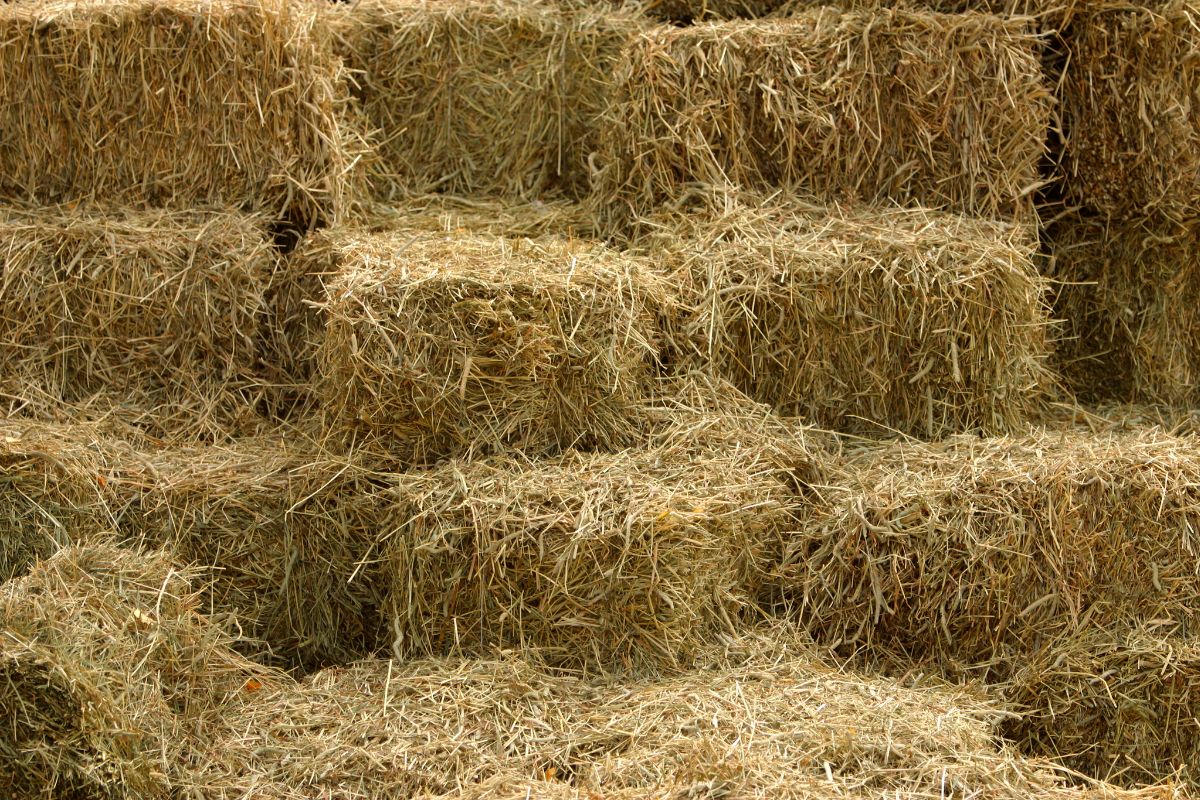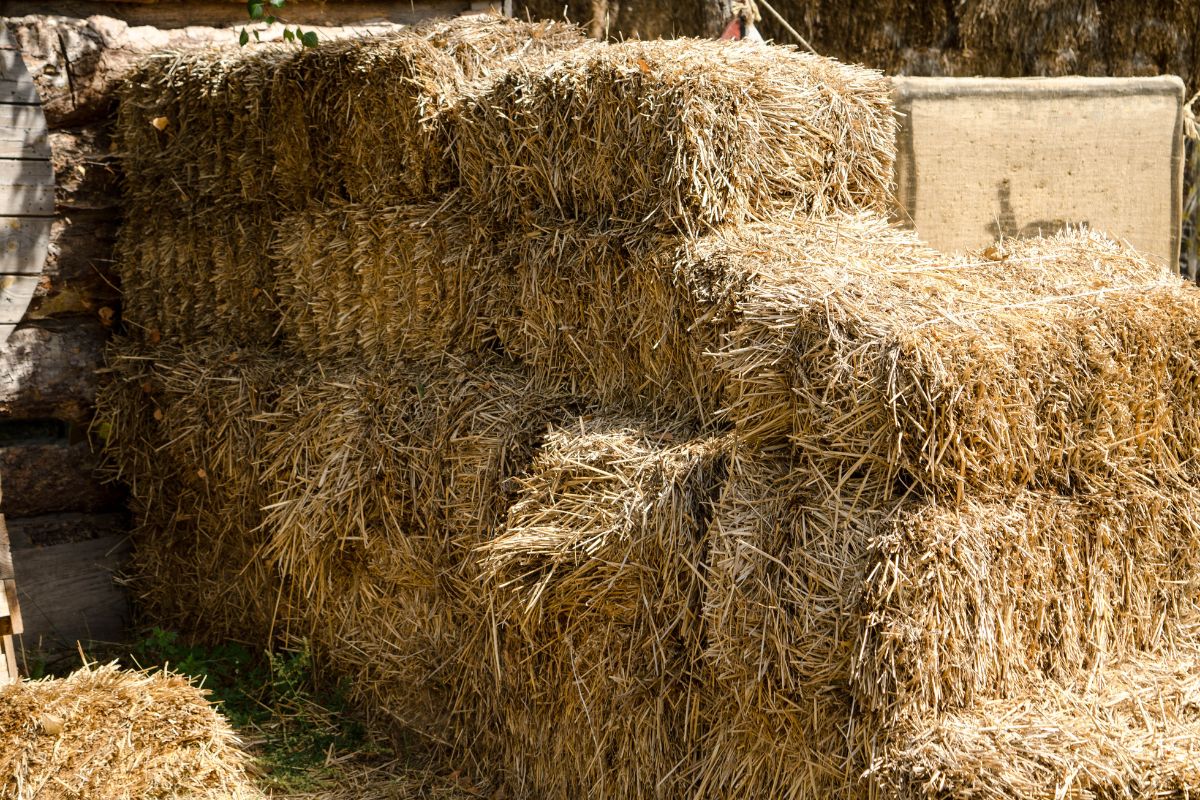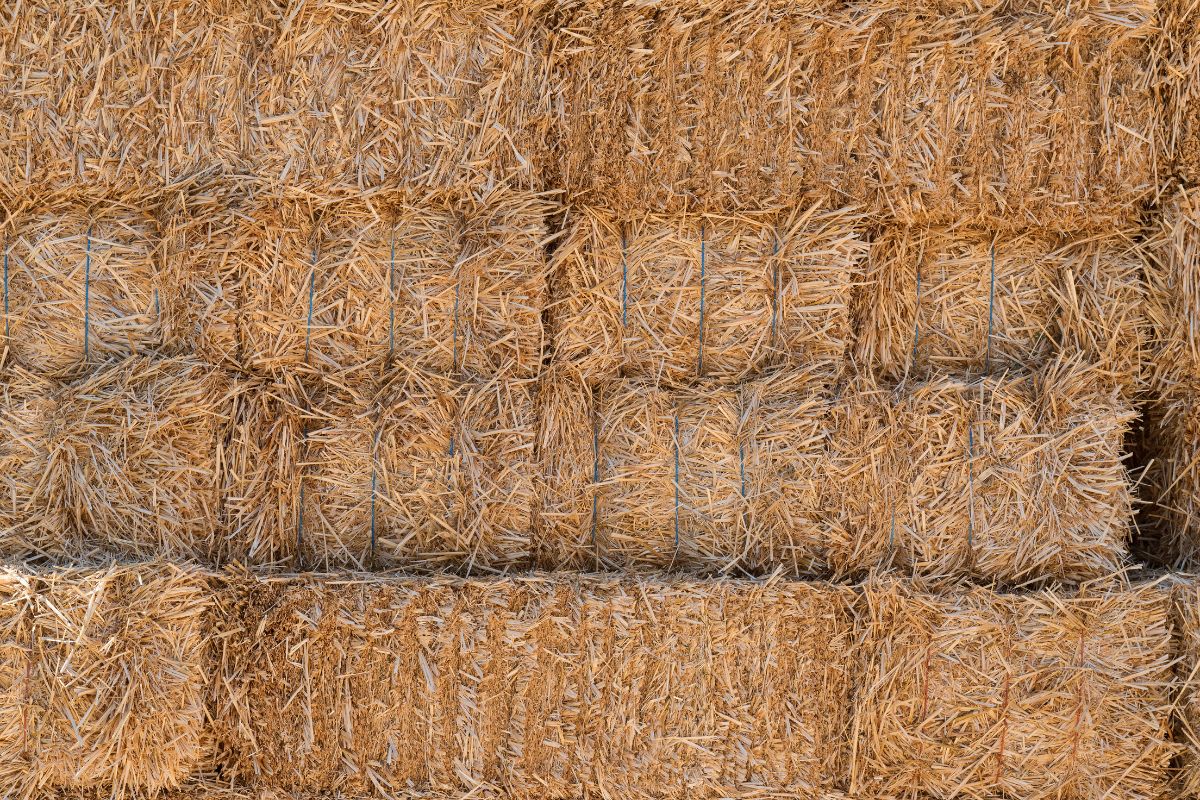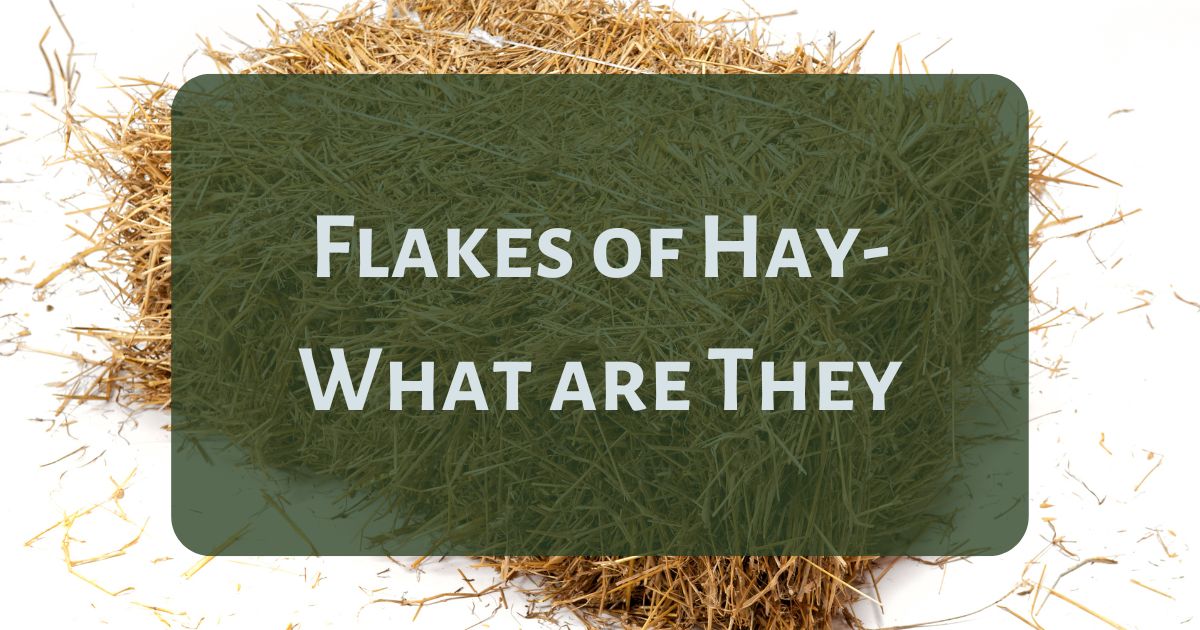Flakes of Hay-What are They?
What is a flake of hay? Flakes of hay form when a baler pulls dried grass or legumes from the row when it’s completely dry. Each bale of hay has different layers known as flakes. Hay flake is the best alternative for feeding your horse. It is also okay to say that a flake is a piece of a bale of hay.

How Many Flakes in a Bale Hay
How many flakes in a bale of hay varies from bale to bale and flake to chip. Mostly, a hay bale has an average of 12 chips. Size and weight also determine the number of chips in a hay bale.
A three-string bale of hay normally has 17 flakes weighing about 5 lbs (2.27 kgs) each. Averagely a two-string bale of hay contains 16 chips, and the average weight is about 5 lbs (2.27 kgs) of each bale.
Hay breaks and turns into flakes; each bale has a different number of flakes depending on the weight. It is important to research the number and the importance of chips in each bale before buying and ensure the horse gets enough hay.
For example, if you are purchasing a bale of hay and want to know how many flakes of hay are 20 lbs (9.1 kgs). A 20 lbs (9.1 kgs) bale of hay has four flakes and is about 5 lbs (2.27 kgs).
Entirely the number of bale flakes depends on the size of the bale. Generally, there are around 12 to 16 chips in a bale of hay.
Therefore, estimating the number of flakes in a hay bale by weight and number of strings is easy.
How Much Does a Flake of Hay Weigh?
How much does a flake of hay weigh? The moderate weight of a bit of grass is around 4 lbs (1.8 kgs) to 5 lbs (2.27 kgs), and a bale of hay varies from 40 lbs (18.1 kgs) to 140 lbs (63.5 kgs) or more. The average weight also depends on the flake’s grass and the amount of hay used.
Different types of hay have different weights, and the full bale weight determines the heaviness of the flake of hay. You weigh the full bale to divide how many chips are in a bale.
Estimating the nutritional content is important; you know how much your hay weighs. The weight of each flake is important because so many horse owners habitually feed a particular number of chips daily.
The weight of a flake can also vary extremely on the machinery used to bale the hay. For example, alfalfa flakes from different cuttings can range from 2.5 lbs (1.1 kgs) to 8 lbs (3.6 kgs) per flake.
A larger bale weighs more than a small bale.

How are Hay Flakes Made?
Flakes form through condensation or release aspect that occurs in the bailing process. The process has simple steps:
Cut: The first process of making a bale is to cut the hay in a row form, leave it to dry, and put it in the bailing chamber.
Compress: The hay goes through compression, then you cut one side of the row and release the pressure.
Cut them into a rectangular shape:
- Repeat the process with another row of cut hay, place it in the chamber, and release.
- Repeat the process until the bale is full size.
- Use hay streamers to avoid moldy hay.
Tie with a wire: Twine or tie the bale with a wire after cutting, and the hay falls apart. These easy-to-separate layers are known as flakes.
Are all Hay Flakes Equal?
Are all hay flakes equal? The answer is no; hay flakes have different standard sizes, amounts of hay used, and compression in the bailing process. The flake size also differs from bale to bale or within the bale.
Flakes are mostly large when you use a great amount of hay and apply less pressure. Although if both the amount of pressure and grass are large, the flake of hay may not be large but heavy.
How Thick is a Flake of Hay?
The thickness of the bale, the number of flakes in each bale, the amount of hay used, and the application of compress pressure determines the thickness of the hay flake.
A normal chip is about 1½ to 2 in (3.8 to 5.1 cms) thick. Divide the flake of hay, and put it on the horse’s feed pan so that the chaffs into the feed pan.
Why are Hay Bales Square?
There are two types of hay bales square and round bales. Most traditional flakes were made in square shapes and were lighter and small in size. The machine used in the bailing process determines the shape of the bale.
Differences Between Round and Square Bales
| Square Bales | Round Bales |
| It takes a long time to produce | It takes less time to produce |
| They are cheap | They are expensive |
| It takes a long time to stack, transport, and store | East to transport and store |
| It weighs about 50 lbs (22.7 kgs) | It weighs about 1,500 lbs (680.4 kgs) |
| Require a long time to dry, cut, and bail | Require less time to dry, cut, and bail |
How Much Does a Hay Flake Cost?
Hay is important in a horse’s diet. The moderate cost of a square hay bale is about $3 to $10, and a round bale is about $30 to $100. Factors that can contribute to the cost of hay:
Location
Location is one of the main factors that determine the cost of hay. Hay is more affordable, readily available, and abundant in rural areas.
Hay is more costly in regularly dry places, such as California, Nevada, and Arizona. Growing grass in these areas is expensive due to the need for water. Most people import hay in these areas, especially when growing is difficult.
When different states import hay, it’s more expensive because of transportation costs. Kansas, Texas, South Dakota, and Missouri grow most grass yearly and are affordable.
Size and Variety of Hay
The common hay bale sizes are square and round bales. Square bales are cheap and smaller than round bales. However, a few people set the price by the hay weight, and others price according to the bale.
Some of the most chronic hay varieties are alfalfa, oat, Timothy, and bermudagrass. Different Prices vary on the type of hay, as they grow differently. Bermudagrass is cheaper and a common grass variety than alfalfa, which has a variety of legume hay.
Time of the Year
People often purchase bulk hay in advance during summer, spring, and early fall, and prices drop mostly in the winter when there is not much demand.
Hay Bale Sizes
There are two common hay bale sizes; square and round hay bales. Square bales are perfect for feeding horses in stalls; flakes allow you to measure your horse’s food, while round bales are absolute for pastures, especially in winter, but they don’t allow you to track how much your horse eats.

Summary
Hay improves a horse’s digestive system and allows a constant flow of food to go through it. If a horse stays for long without a meal, it will suffer from stomach acid accumulation leading to ulcers and colic.
A horse can eat about 15 to 25 lbs (6.8 to 11.3 kgs) of hay daily, which mostly equals half a 45 to 50 lbs (20.4 to 22.7 kgs) square bale daily. Normally, horses should eat about 1% to 3% of their weight and should not overfeed with flakes.
Good standard hay should have a green color with a sweet and fresh smell, be loose and flaky, and have a good mixture of leaves.
Do not feed your horse dusty, dull, and full of sticks grass. Supposing you notice mildew or mold on the hay, don’t give it to your horse.
There are two main types of hay; grass and legume. Grass has high fiber content, while legumes have high protein and calcium content. There are different types of hay within legumes and grass; Alfa, Timothy, Oats, and Bermudagrass.
Square and round bales are important depending on your needs.
